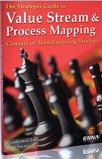|
 The
principle of Mixed Model Production is simple enough. Designing the process and system is often
more difficult. In this page we explore common roadblocks and describe some techniques to
eliminate them. The
principle of Mixed Model Production is simple enough. Designing the process and system is often
more difficult. In this page we explore common roadblocks and describe some techniques to
eliminate them.
When people are enmeshed in an existing system they have difficulty envisioning how mixed
model, smoothly flowing production is possible.
|
|
 In
A Nutshell In
A Nutshell
There are
many roadblocks to mixed model production lines and assembly cells. Here are some of the
roadblocks and ways to get around them.
|
It helps to ask two key questions:
-
What must be true for this to work?
- How could we make it true?
Thoroughness and tenacity can often make various conditions true and
achieve (or come close to) the ideal model of a smoothly flowing stream.

|
|
Problem |
Description |
Solutions |
| Work Balance |
When different models have different work content, operations must be flexible enough to deal
with the product mix.
|
-
A constantly moving line only lends itself to mixed model production
when work content is nearly identical for each station. See
Balancing Workcells.
-
Small Queues between stations to accommodate short-term variation.
-
Adjacent workers share tasks and help each other.
-
Fewer stations and longer task times.
|
| Part
Availability |
For a mixed model assembly line to function, every part for every product must be immediately
available.
|
|
| Tool
Availability |
Tools and special fixtures must be readily available. (This is seldom a problem when the
product is small. It may be a problem with large products such as refrigerators or vehicles.)
|
|
| Fabrication
Setup Reduction |
Dedicated fabrication equipment is not always available. Long, expensive and/or inconsistent
changeovers force large batches and high
inventory between fabrication and the mixed model line.
|
- Setup Reduction
In Fabrication with small lots.
- Redesign fabrication processes with more dedicated equipment, even
(if necessary) at the cost of decreased labor efficiency.
- Investigate alternate
processes.
|
| Problem |
Description |
Solutions |
| Process Incompatibility |
This usually involves processes that must be isolated for environmental reasons (Dust, Dirt,
Chemicals or Noise).
|
- Address the environmental problem with dust control, noise control, etc.
-
Investigate alternate processes.
|
| Process Scale |
Large-scale fabrication processes have too much capacity for a single assembly cell.
|
- Investigate alternate equipment and methods. (e.g. small, manual paint booth replacing a
large paint line)
|
| Special Skills |
Certain tasks require extensive skills, experience and/or training but do not require a
full-time operator for each cell.
|
- Tools, fixtures or gages that require less skill
- Train or cross train
-
Train cell workers in basics with consultant employee for difficult problems. The daily
tasks often do not require high skills or knowledge.
|





